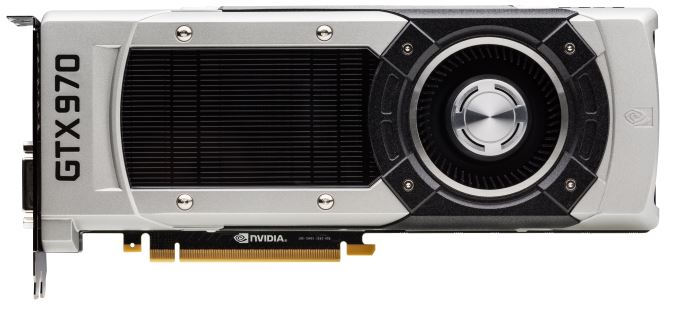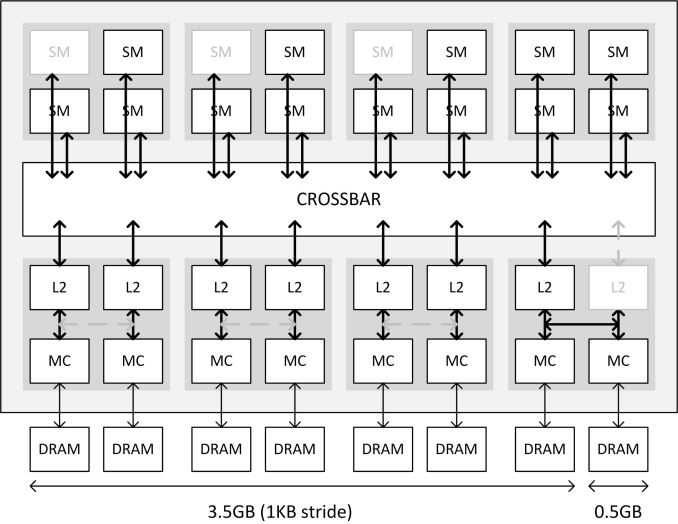Update: NVIDIA GeForce GTX 970 Settlement Claims Website Now Open
by Ryan Smith on September 12, 2016 9:30 AM EST
Update 09/12: Bringing this back up, over the weekend the website to submit settlement claims went up. Owners of GTX 970s who purchased the card between its launch and August 24th of this year can participate in the settlement in order to receive $30 per card. The settlement itself has not yet been approved by the courts, but is expected to be approved in December.
Interestingly, there is no damage cap in the settlement, so all participants will receive a fixed $30 per card regardless of the price paid or the number of claimants. Meanwhile the proposed attorney fees total $1.3 million.
Original: 07/29
Word comes from Top Class Actions (via The Tech Report) that NVIDIA will soon be settling a series of proposed class action lawsuits brought against the company regarding the GeForce GTX 970. Under the preliminary settlement, United States residents who purchased GeForce GTX 970 cards would be able to claim a $30 settlement in return for dropping further litigation against the company. With the GTX 970 having launched at $329, this amounts to a de facto 9% rebate on the card.
The class action suits in question were brought against the company almost immediately after NVIDIA made the important (and more than a bit painful) disclosure that the initially published specifications for the GTX 970 were wrong. Specifically, that the card had an unusual memory crossbar organization where one ROP/L2 partition was disabled, giving the card only 56 ROPs instead of 64. Furthermore, this meant that the last 512MB of the standard 4GB of VRAM could not be accessed in a contiguous manner, impacting how it could be used. To that end, as the Top Class Actions article notes, the $30 settlement “was calculated to represent a portion of the cost of the storage and performance capabilities the consumers thought they were obtaining in the purchase of the product.”
With that said, at this point the settlement itself has yet to be approved by the court, and signups are not yet available. Assuming it is approved, I’d expect that signups will be made available shortly thereafter.
Source: Top Class Actions (via The Tech Report)











105 Comments
View All Comments
Kvaern1 - Tuesday, August 2, 2016 - link
+6 this.JoeyJoJo123 - Monday, September 12, 2016 - link
Nice B8, I r8 7/8, m8.Yojimbo - Friday, July 29, 2016 - link
Wow, $30 a card, even for people who bought the cards after the correction was made. That's a pretty favorable settlement for card buyers.I don't think I could claim my settlement in good conscience if I had bought a card and was never fooled by the initial inaccuracy.
bigboxes - Friday, July 29, 2016 - link
Well, I'm just going to have to live with a guilty conscience. Whoa is me.Focher - Friday, July 29, 2016 - link
I'll take yours.fanofanand - Friday, July 29, 2016 - link
I hope this settles the "was it false advertising" debate. The card performed as advertised, but didn't have the specs as advertised. We have seen this in the automotive sector quite a bit, previously over HP numbers and more recently over MPG. I would hate to see what the lawyers' cut was on this, but if it helps to keep marketing departments honest then it's a good thing.przemo_li - Friday, July 29, 2016 - link
GPU was not performing as advertised.Nvidia only after whole debacle released drivers that disabled last 0,5 GB segment of ram for the games that did not needed them (but took account from any available RAM to speed things up).
So Nvidia claimed they will have 4GB of XYZ Hz RAM. They did not had them.
False advertisement.
And if gpu lived up to Nvidia provided benchmarks... It was only because Nvidia did not provided any benchmarks that actually used 4th GB of ram.
* I say 4th because of game used over 3,5GB actually it was 2 last 0,5GB segments of RAM that where slow as they shared the bus in that situation and got 50% of the bandwidth in pessimistic scenario - hence disabling it was actually preferable in some games to just setting is as "slow" buffer.
Nfarce - Friday, July 29, 2016 - link
If you research tech websites dating back to January 2014 when the issue was first reported, you'll see that most of them had to work REAL HARD to find a combination of settings in games to "break" the card. It took specific settings in specific games that few users used. This is why most 970 users never even knew there was a problem with the card until it was reported, and only then did everyone throw their arms up (I was one of them originally).However, after all the dust settled, it was never a big issue for 99% of the users. None of my games came even close to hitting 3.5GB VRAM allocation at 1440p (allocation only and not even actual use which is almost always lower). There's a reason the 970 is one of Nvidia's top selling GPUs of all time and to this day the most popular GPU used for Steam PC gamers.
The GPU *HAS* 4GB GDDR5 VRAM. FACT. The issue is Nvidia failed to disclose HOW that last .5GB was actually used. That's what this lawsuit is based on...NOT that it did NOT have 4GB which it DOES. Defense lawyers love witnesses like you!
Nfarce - Friday, July 29, 2016 - link
"dating back to January 2014" <-- meant 2015Samus - Friday, July 29, 2016 - link
The card shipped with 4GB of physical RAM. There isn't any indication anywhere, on any video product ever sold, that all the memory is addressable.At the end of the day the card remained the best value, and the Maxwell texture compression engine more than made up for lacking 512MB of RAM. The high resolutions that would have utilized that much memory wouldn't run on the GPU anyway because at that point there were GPU limited before memory limited.
The only people that really got screwed by this are potential SLI adopters, and thus they are the only ones who should be eligible for credit.